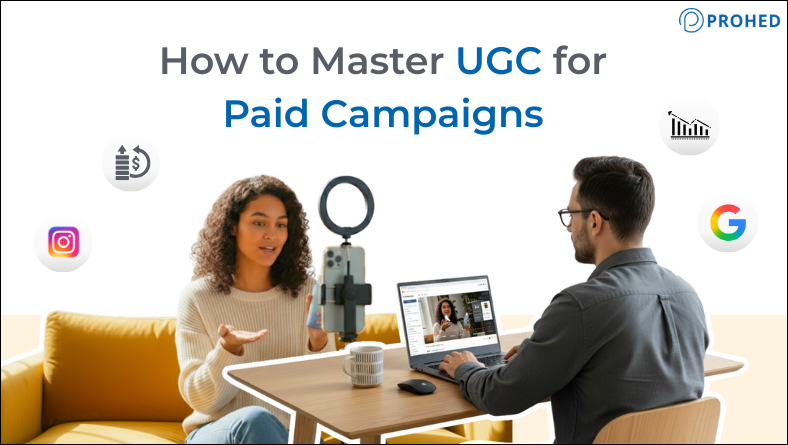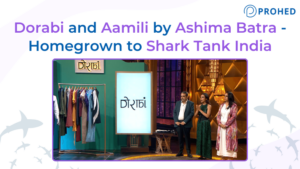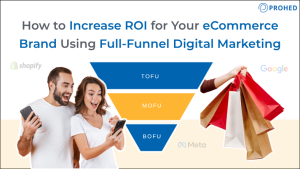User-Generated Content (UGC) is changing the way modern marketing works by making ads feel more real and relatable. Instead of looking like polished brand commercials, UGC—like customer reviews, unboxing videos, testimonials, or social media posts helps build trust, increase engagement, and drive more sales.
Brands across ecommerce, D2C, fintech, real estate, and EdTech are successfully leveraging UGC in paid ads to connect with audiences, improve ROI, and create social proof.
When used strategically in paid advertising, UGC can significantly boost engagement, improve click-through rates, and drive higher conversions.
In this blog, we’ll dive into what UGC is, why user-generated content matters in today’s marketing landscape, the types of UGC that perform best in paid ads, and practical strategies brands can use to master UGC for successful paid campaigns.
What is UGC?
User-Generated Content (UGC) refers to any form of content, such as photos, videos, reviews, testimonials, unboxings, or social media posts, created by real customers rather than brands. Unlike polished brand creatives, UGC feels raw, authentic, and relatable, which makes it highly influential in purchase decisions.
In marketing, UGC can take many forms: an Instagram story of a customer unboxing a product, a YouTube review, a TikTok tutorial, or a simple testimonial on a brand’s website.
Today, brands are not only encouraging customers to create UGC but also repurposing it in paid ad campaigns to drive higher engagement and conversions.
Difference between UGC and Influencer Marketing
Feature | UGC (User-Generated Content) | Influencer Marketing |
Creator | Everyday customers who genuinely use the product | Influencers or content creators with a sizable audience |
Purpose | To showcase authentic experiences, reviews, or testimonials | To promote products/services to their audience, often through paid collaborations |
Cost | Usually low or free (customers create content voluntarily) | Often paid campaigns, sponsored posts, or collaborations |
Authenticity | Very high—content is raw and relatable | Can be authentic if done well, but sometimes feels promotional |
Platform Use | Can appear in social media posts, reviews, unboxing videos, photos | Mostly on social media platforms (Instagram, YouTube, TikTok) where the influencer has reach |
Integration in Paid Ads | Brands can repurpose UGC for paid campaigns to boost trust and engagement | Influencer content can also be used in paid campaigns, but it originates from the influencer collaboration |
Audience Perception | Seen as peer recommendations—social proof | Seen as expert or aspirational endorsement; may feel more like advertising |
Why UGC Matters in Modern Marketing
Modern consumers are sceptical of traditional advertising. Glossy commercials often feel “too perfect” to be believable.
On the other hand, UGC marketing resonates because it’s real and created by people who have genuinely interacted with the product or service.
- Builds Brand Trust: 88% of consumers trust user reviews as much as personal recommendations.
- Cost-Effective Advertising: UGC reduces dependency on expensive photoshoots or influencer collaborations.
- Social Proof in Marketing: Seeing peers endorse a product reassures potential buyers.
- Community Building: User-generated content encourages customers to feel like brand advocates.
Why UGC Works for Paid Campaigns
When brands run paid ads, the primary goal is to stop the scroll, build trust instantly, and drive action. UGC advertising excels here because:
- Authenticity Converts: UGC ads don’t look like ads. They blend into the social feed, making them less intrusive and more believable.
- Relatable Storytelling: Viewers connect with “real people” sharing real experiences.
- Higher Engagement Rates: User-generated content ads often see more clicks, comments, and shares than brand-polished ads.
- Better ROI: According to studies, UGC-based ads can increase conversions by 29% compared to traditional ads.
Platforms like Meta ads, TikTok ads, and YouTube ads even highlight UGC-style creatives as top-performing ad formats.
Types of UGC That Perform Well in Ads
Certain UGC formats consistently outperform others in paid advertising:
- Review & Testimonial Videos: Influencer or customer clips describing their experience create trust instantly.
- Unboxing Videos: These reveal genuine product excitement and unpacking rituals.
- Before-and-After Photos: Effective for beauty, fitness, home improvement, and healthcare brands.
- Product Usage Demonstrations: Showcases how the product fits into daily life.
- Social Media Mentions & Stories: Short authentic clips or posts, especially from micro-influencers.
- Customer-Created Memes & Creative Posts: Engage younger demographics with humor or relatable content.
How to Source UGC for Paid Campaigns
Sourcing quality UGC systematically is crucial for consistent paid campaigns. Here are proven methods:
- Encourage Customers to Share: Use hashtags, contests, and engagement prompts inviting customers to share their experience.
- Influencer Partnerships: Collaborate with influencers for review content, ensuring permission to use their videos/reels in ads.
- Create UGC Briefs: Share simple guidelines with creators to ensure content aligns with your brand messaging.
- Use UGC Platforms: Tools like Billo, Trend.io, and Insense connect brands with creators who specialize in UGC-style videos.
How Top Brands Source and Use UGC for Paid Ads
Here are examples of how leading brands across industries leverage UGC in their paid campaigns:
E-commerce:
- Myntra: Through initiatives like the Ultimate Glam Clan, Myntra motivates users and influencers to post outfit reels and styling tips, creating UGC that powers paid ads and social commerce while fostering a creator community.
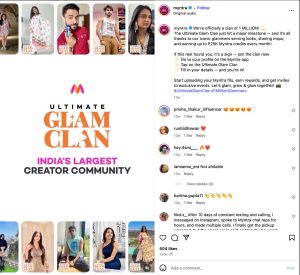
D2C Brands :
- Mamaearth: Through campaigns like #MamaearthMummySong on Mother’s Day, Mamaearth encourages users to create fun dance videos celebrating motherhood, generating authentic UGC that fuels paid ads across Facebook and Instagram.
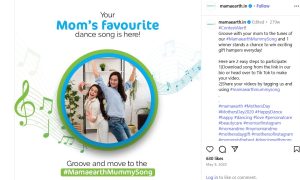
Common Mistakes to Avoid in UGC Advertising
While UGC ads are powerful, brands often make mistakes that hurt performance:
- Over-Editing Content: Too much polish kills authenticity. Keep UGC natural.
- Ignoring Permissions: Always get consent before repurposing customer-generated content.
- One-Size-Fits-All Approach: What works on TikTok might not work on LinkedIn. Customize UGC by platform.
- Not Testing Enough Variations: Relying on one UGC ad is risky—test multiple formats.
- Forgetting Brand Messaging: Authenticity is key, but don’t lose brand consistency.
Avoiding these mistakes ensures your UGC campaigns remain impactful and legally safe.
Conclusion
User-Generated Content is no longer just a marketing trend—it’s a powerful tool for running high-performing paid campaigns. By tapping into authentic customer voices, brands can build trust, drive stronger engagement, and achieve better ROI than traditional ads.
The key lies in sourcing the right content, tailoring it for each platform, and balancing authenticity with consistent brand messaging. Master UGC, and you’ll master the art of turning everyday customers into your most effective advertisers.
FAQs
What does UGC mean in marketing?
UGC stands for User-Generated Content. It refers to any content—like reviews, photos, videos, testimonials, or social media posts—created by real customers instead of the brand. It’s valuable because it feels more authentic and trustworthy than brand-produced ads.
Why is UGC important for paid ads?
UGC works better in paid ads because it looks natural, relatable, and blends into social feeds. Customers trust real people’s experiences, which increases engagement, boosts click-through rates, and drives higher conversions compared to traditional polished ads.
What type of UGC performs best in advertising?
The most effective UGC formats for paid ads are:
- Short review/testimonial videos
- Unboxing videos
- Before-and-after transformations
- Product usage demos
- Quick social media stories/reels
- Customer-generated memes for younger audiences
How can brands collect UGC from customers?
Brands can encourage UGC through hashtags, contests, and engagement prompts. They can also collaborate with influencers, create simple content briefs for creators, or use dedicated UGC platforms like Billo, Trend.io, or Insense to source ready-to-use UGC for ads.
Is UGC the same as influencer marketing?
Not exactly. UGC is content created by everyday customers, while influencer marketing involves paid collaborations with creators who have an audience. However, influencers can also produce UGC-style content for brands.
